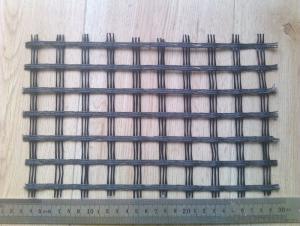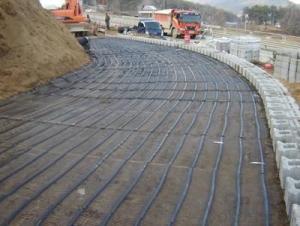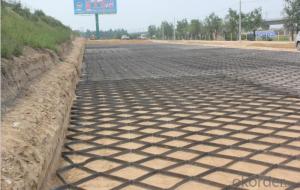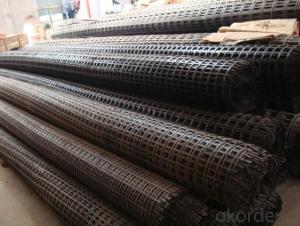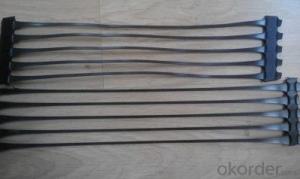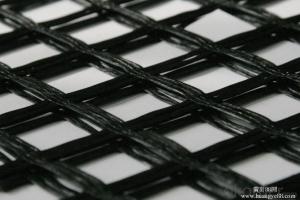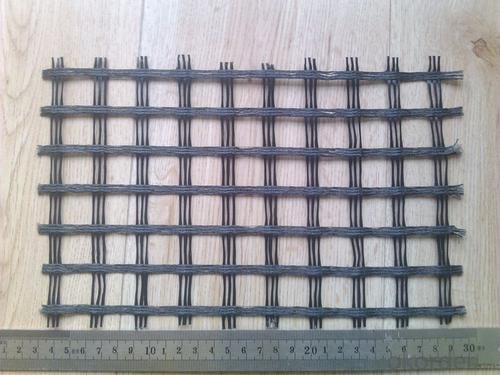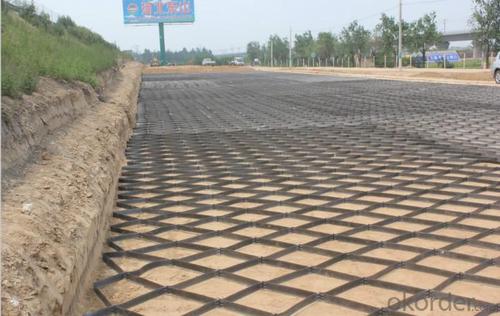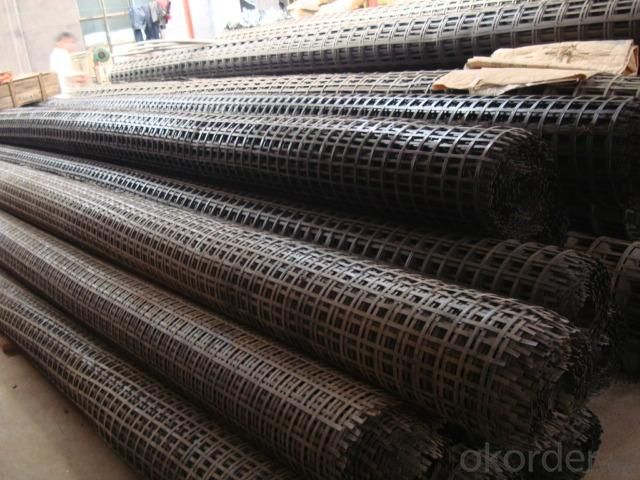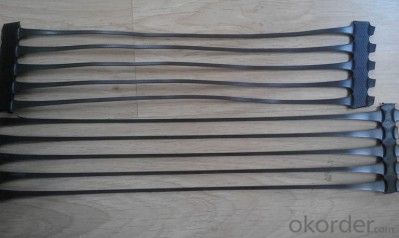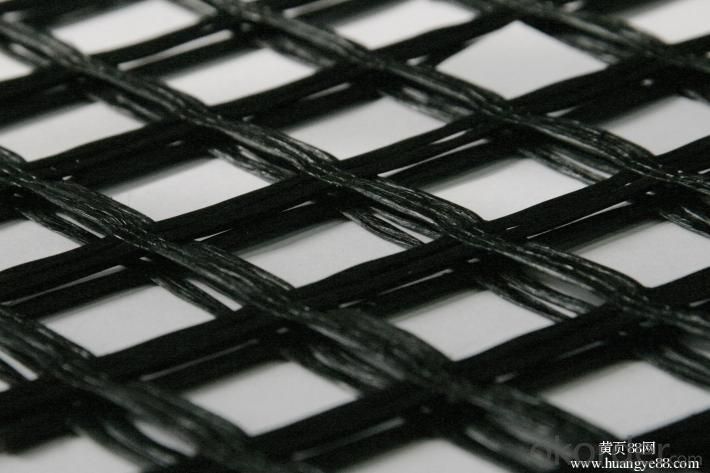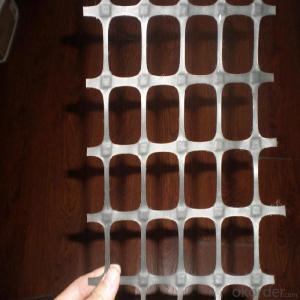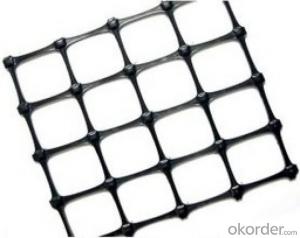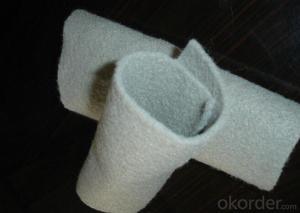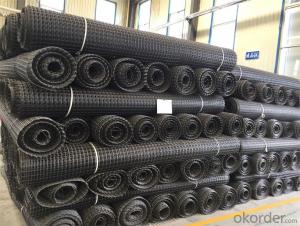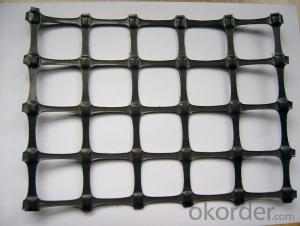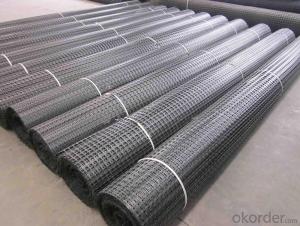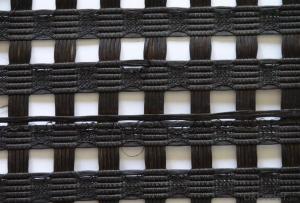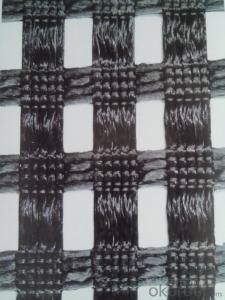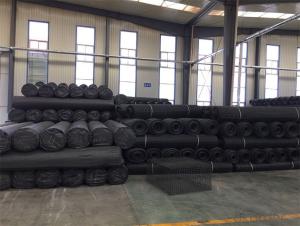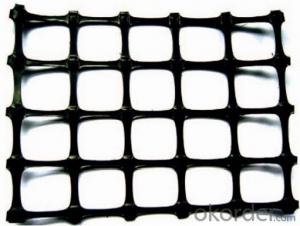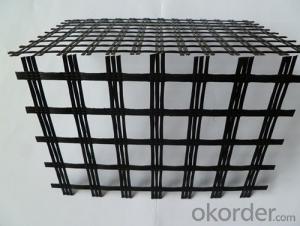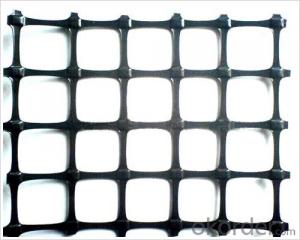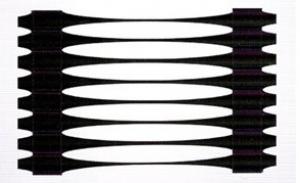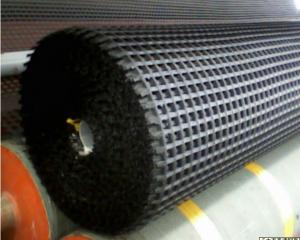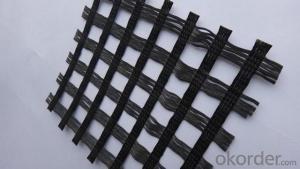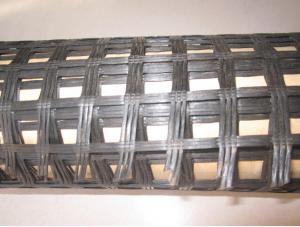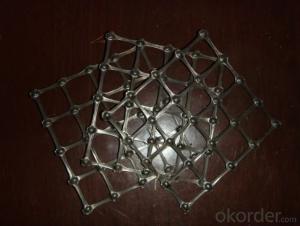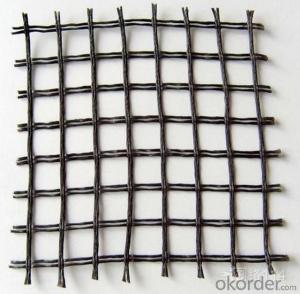Stable Access Routes Biaxial Plastic Geogrid for Road Reinforcement
- Loading Port:
- Qingdao
- Payment Terms:
- TT OR LC
- Min Order Qty:
- 30000 m²
- Supply Capability:
- 1000000 m²/month
OKorder Service Pledge
OKorder Financial Service
You Might Also Like
Structure of Biaxial Plastic Geogrid
Biaxial Plastic Geogrid is made in Polyester with their square apertures, high tensile strength and optimised geometry of nodes and ribs make them equal to any other similar material. The reinforcing action of Polyester Geogrids lies mainly in confining soil and increasing its shearing resistance by a process of interlocking between the square ribs and the soil. The load dispersal effect from the interlocking mechanism is highly effective and can reduce sub-base thickness and construction cost. Polyester Geogrids can be used with any kind of mechanical fill material. Two aperture size ranges are available for optimum matching with project fill.
Main Features of the Biaxial Plastic Geogrid
Light weight, high tensile strength, high modulus, low elongation and good toughness.
Corrosion resistance, no long-term creep, long life span.
Good physical and chemical stability and good thermal stability.
Resistant to fatigue cracking, high-temperature track and low temperature shrinkage cracking.
Delaying and decreasing crack reflection.
Light weight, high tensile, corrosion resistance
Road maintenance and reinforcement
Packaging & Delivery
| Packaging Details: | PP bags or PE film. Or Packed as customers' requests. |
| Delivery Detail: | 10-20days after the contract is effective |
Biaxial Plastic Geogrid Images
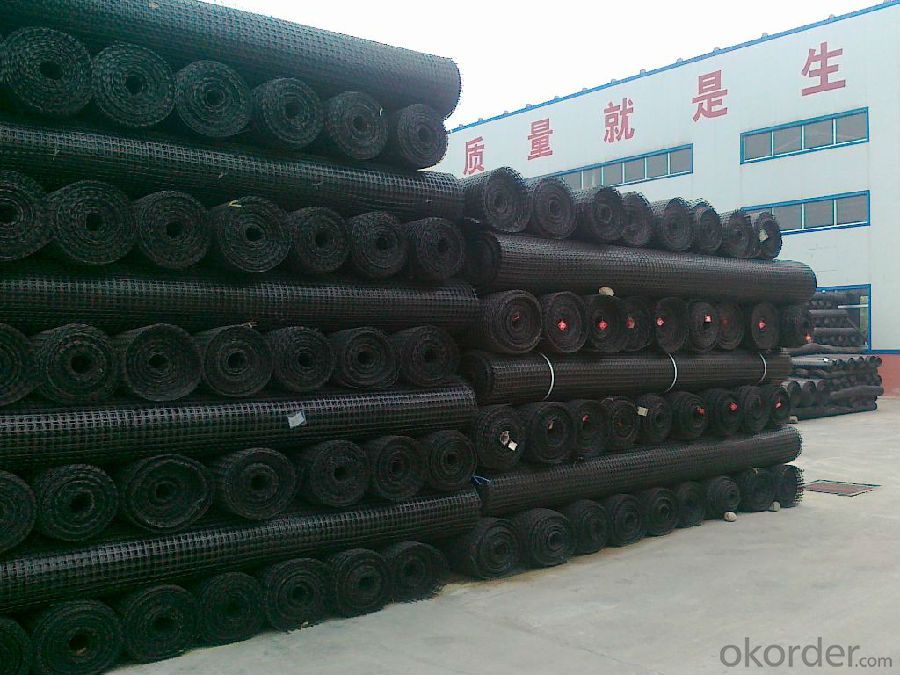
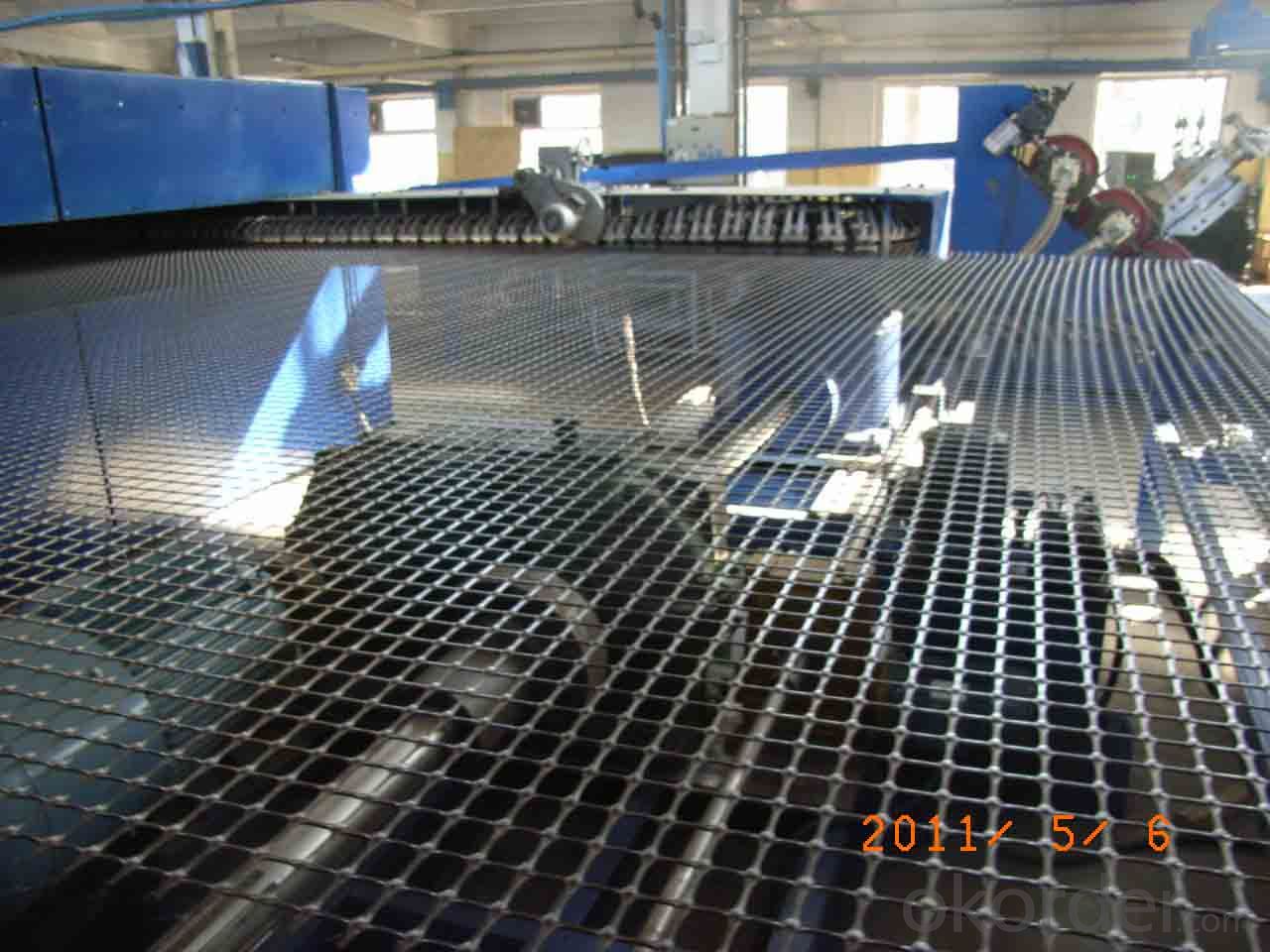

Biaxial Plastic Geogrid Specification
Converting old cement concrete road into composite road.
Restraining reflection cracking caused by block shrinkage.
Preventing and controlling the cracking caused by new and old combination and uneven settlement.
Road extension.
Reinforcement of soft soil foundation and overall strength of roadbed
Property | Test Method | TGSG 15-15 | TGSG 20-20 | TGSG 30-30 | TGSG 40-40 | |
Ultimate tensile strength(1) (kN/m) | MD |
ASTM D 6637 | 15 | 20 | 30 | 40 |
CD | 15 | 20 | 30 | 40 | ||
Elongation at maximum load (%) | MD | 13 | ||||
CD | 13 | |||||
Tensile strength at 2 % elongation (kN/m) | MD | 5 | 7.5 | 10.5 | 14 | |
CD | 5 | 7.5 | 10.5 | 14 | ||
Tensile strength at 5 % elongation (kN/m) | MD | 7 | 14 | 21 | 28 | |
CD | 7 | 14 | 21 | 28 | ||
Minimum Carbon Black | % | ASTM D 4218 | 2 | |||
FAQ
We have organized several common questions for our clients,may help you sincerely:
Q: How about your company?
A:Our company are one of the largest geosynthetic products supplier in the world.We have the products experience more than 20 years.Already export to USA/Germeny/Australia/Zambia/Brazil etc.more than 20 countries.Almost 10years.Our products including Geocell/Biaxial Plastic Geogrid/Geomembrane/Geotextile/Geonet etc.
Q.Does your products have good qualitity?
A:Yes,we have do many big projects such as the 2008 Beijing Olympic BIRD NEST. Divert water from the south to the north project. And our products have CE certificate also.
Q:How long can we receive the products after purchase?
A:In the purchase of product within three working days, We will arrange the factory delivery as soon as possible. The pecific time of receiving is related to the state and position of customers.Commonly 15-20 working days can be delivery.
- Q: Can geogrids be used in soil stabilization for airport runways?
- Yes, geogrids can be used in soil stabilization for airport runways. Geogrids are often used to reinforce and stabilize the soil, providing increased load-bearing capacity and reducing the potential for soil settlement and erosion. This makes them an effective solution for enhancing the stability and durability of airport runways, especially in areas with poor soil conditions or heavy traffic loads.
- Q: What are the factors that affect the design and selection of geogrids for geosynthetic reinforcement of slopes?
- There are several factors that affect the design and selection of geogrids for geosynthetic reinforcement of slopes. These factors include the slope angle, soil type and properties, anticipated loads and stresses, construction constraints, and environmental conditions. The slope angle determines the required strength and stiffness of the geogrid to resist gravitational forces and prevent slope failure. The soil type and properties, such as cohesion and internal friction angle, influence the interaction between the geogrid and the soil, affecting the required geogrid aperture size and tensile strength. The anticipated loads and stresses, such as traffic loads or groundwater pressures, determine the design strength and durability requirements of the geogrid. Construction constraints, such as access limitations or equipment availability, may influence the selection of geogrid installation methods. Lastly, environmental conditions, such as temperature variations or chemical exposure, affect the long-term performance and durability of the geogrid, influencing the choice of materials and protective measures. Overall, a thorough understanding of these factors is essential for the effective design and selection of geogrids for geosynthetic reinforcement of slopes.
- Q: Are there any limitations or drawbacks of using geogrids?
- Yes, there are limitations and drawbacks to using geogrids. Some of the limitations include the need for proper installation and compaction to achieve desired performance, as well as the requirement for an appropriate soil structure to effectively interlock with the geogrid. Additionally, geogrids may not be suitable for certain soil types, such as highly compressible or expansive soils. Other drawbacks include potential damage during installation, high cost compared to conventional soil reinforcement methods, and potential long-term degradation due to environmental factors.
- Q: How do geogrids improve the performance of geosynthetic-reinforced foundations?
- Geogrids improve the performance of geosynthetic-reinforced foundations by providing enhanced tensile strength and stability to the soil. They act as a reinforcement material, distributing the load more uniformly and preventing the soil from shifting or settling. This helps to increase the overall strength and durability of the foundation, reducing the potential for foundation failure or deformation. Additionally, geogrids can also improve drainage and reduce the risk of erosion, further enhancing the performance of the geosynthetic-reinforced foundation.
- Q: Can geogrids be used in reinforcement of mechanically stabilized slopes?
- Yes, geogrids can be used in the reinforcement of mechanically stabilized slopes. Geogrids are often used to improve the stability and strength of slopes by providing additional reinforcement to the soil. They help to distribute the loads and reduce lateral movement, thus preventing slope failure. Additionally, geogrids can enhance the overall performance and longevity of mechanically stabilized slopes by improving their resistance to erosion and environmental factors.
- Q: What are the specifications of fiberglass geogrid for Asphalt Pavement
- The use of asphalt pavement can only use fiberglass grille, the other are used on the top of the embankment
- Q: What is the vertical spacing of Geogrid
- Refers to the size of the geogrid mesh holeSpecific attention is not clear, the banner of Chang Chang official CafeThere's something you're looking forGrille generally by the vertical and horizontal staggered from the simple meaning of space can also be understood that the size of the lattice gap.
- Q: Can geogrids be used in ground stabilization for wastewater treatment plants?
- Yes, geogrids can be used in ground stabilization for wastewater treatment plants. Geogrids are commonly used in civil engineering projects to reinforce soil and provide stability. In the case of wastewater treatment plants, geogrids can be used to reinforce the ground and prevent soil erosion, especially in areas with high water flow or heavy loads. They can improve the stability of the ground and ensure the longevity and effectiveness of the wastewater treatment infrastructure.
- Q: In the case of the subgrade with Geogrid
- When the subgrade for soft foundation treatment using geogrid, geogrid is used as reinforcement of reinforced earth structure or reinforced material, the main function is to play the role of tensile.
- Q: Each side of geogrid is not less than 3 meters, what does it mean?
- At present, the largest width of single geogrid is 6 meters
Send your message to us
Stable Access Routes Biaxial Plastic Geogrid for Road Reinforcement
- Loading Port:
- Qingdao
- Payment Terms:
- TT OR LC
- Min Order Qty:
- 30000 m²
- Supply Capability:
- 1000000 m²/month
OKorder Service Pledge
OKorder Financial Service
Similar products
Hot products
Hot Searches
Related keywords
